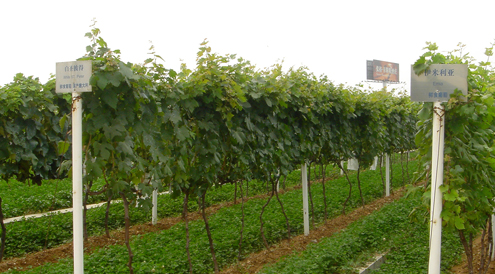
A decade or two ago, snide remarks made about the wine industry in China were all about whether the Chinese were still enjoying their red wine with Coke. With China now among the top six producers and among the top six consumers of wine in the world (according to the International Organisation of Vine and Wine’s 2010 Report), comments focus more on the quality and authenticity of Chinese wines. “Are Chinese wines really any good?” I am often asked. “Do you really think the wine in the bottle is 100% Chinese?” Given the reputation of China made products in other industries, these are valid questions. I have written at length in the past about how disappointing I found the overall quality of Chinese wines. Over the past seventeen years, I have watched the Chinese wine industry go through boom and bust cycles and the domestic producers churn out insipid wines. Some were beyond insipid – they were faulty and simply awful.
It is really in the past five years that there has been a distinct turnaround. I regularly purchase wine off large retailers shelves priced between RMB 100 to RMB 500 whenever I am in China, just to gauge where the domestic market stands at the moment. Whereas in the past, I felt myself grimacing and frowning, now I find myself slowly nodding my head with a smile, “Not bad, not bad at all.” This is despite the fact that many retailers have little awareness about storage and wines are kept upright under glaring fluorescent lights. I have noticed that wines sold in secondary cities tend to be weaker, less clean, more soupy and bitter, compared to the same wines purchased at Carrefour in Shanghai or Beijing. If the taste of the same wine varies in quality by city, then are the best blends or lots sent to the more prosperous coastal cities and the dredges packaged for secondary cities? Is it a question of poor storage and handling? Are these wines solely from grapes grown in China? These are questions that would take investigative reporting, best conducted under-cover. What we do know from what is available in the open market is that at around RMB 300 per bottle, the wine you are likely to get from Changyu, Dynasty or Great Wall is going to be decent, drinkable and maybe if you are lucky, even pleasurable. I found one such wine – a non-vintage Cabernet Sauvignon made by Great Wall called Zone A, a vineyard in Hebei province. This medium bodied red wine has very good varietal definition. It exudes dark berry fruit notes with hints of cedar and tobacco. The fruit profile is not as exuberant as the Cabernets from the New World – it is gentler, with soft, rounded tannins and a decent length. Recently in Decanter World Wine Awards, one of the most prestigious wine competitions, He Lan Qing Xue winery in Ningxia province in China won two awards for their 2009 Bordeaux blend, Jia Bei Lan, and a silver medal for their 2008 Cabernet Sauvignon. I am so optimistic about the future of Asian wines that at the Galaxy Macau resort, I chose to list six Chinese wines including boutique winery Grace Vineyard, the Great Wall Zone A and Helan Mountain winery. We know that the government is dedicated to improving the quality of domestic wines. The China National Grape Wine Standard, established in January 2008, is attempting to set standards to control domestic wine quality. There are now stipulations in place on yield per kilo of grapes and sugar levels as well as encouragement to achieve the Certificate Standard. It is still too early to see the real impact of these new measures on domestic wine quality but the message from the government is clear: aim to make quality wine which can compete with imports. The producers are responding on various levels. At the domestic giants end, the likes of COFCO and Changyu are continuing to expand domestically, form joint ventures that improve their winemaking skills and acquire vineyards overseas. COFCO now owns a Chilean winery as well as a small Bordeaux property called Chateau Viaud. Both Dynasty and Changyu have enjoyed various foreign joint venture partnerships over the years. At the boutique winery level, new quality-conscious properties like Helan, Jade Valley and Silver Heights dot the landscape and bring fresh internal competition to the domestic scene. After three decades of foreign investment and foreign consultants offering winemaking tips, the Chinese producers were bound to get it right sooner or later and produce sound, consistent wines. Some may accuse them of becoming master blenders of late (a cocktail of domestic and imported juice), but even in blending there is a certain skill involved and this is clearly being refined. While the consumer base is undeniably growing, China’s wine industry is keeping pace, forcing producers to focus on quality to retain loyal, satisfied customers. Cynics will say that mainland Chinese consumers are buying by label, for face or purely by price. In reality, these reasons are not that different from the way the rest of the western world buys wine when confronted with 1000 wine labels on a supermarket shelf or on a restaurant list.
Reprinted with permission from South China Morning Post









